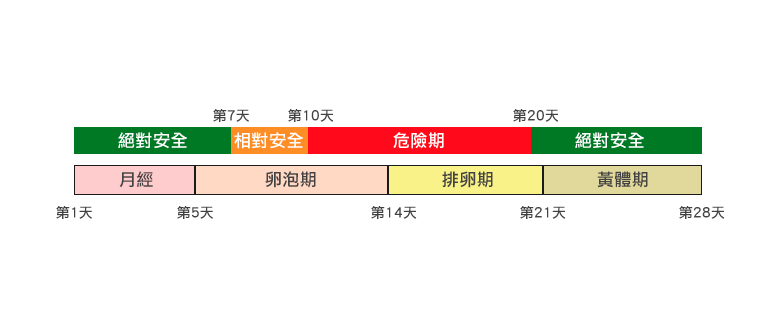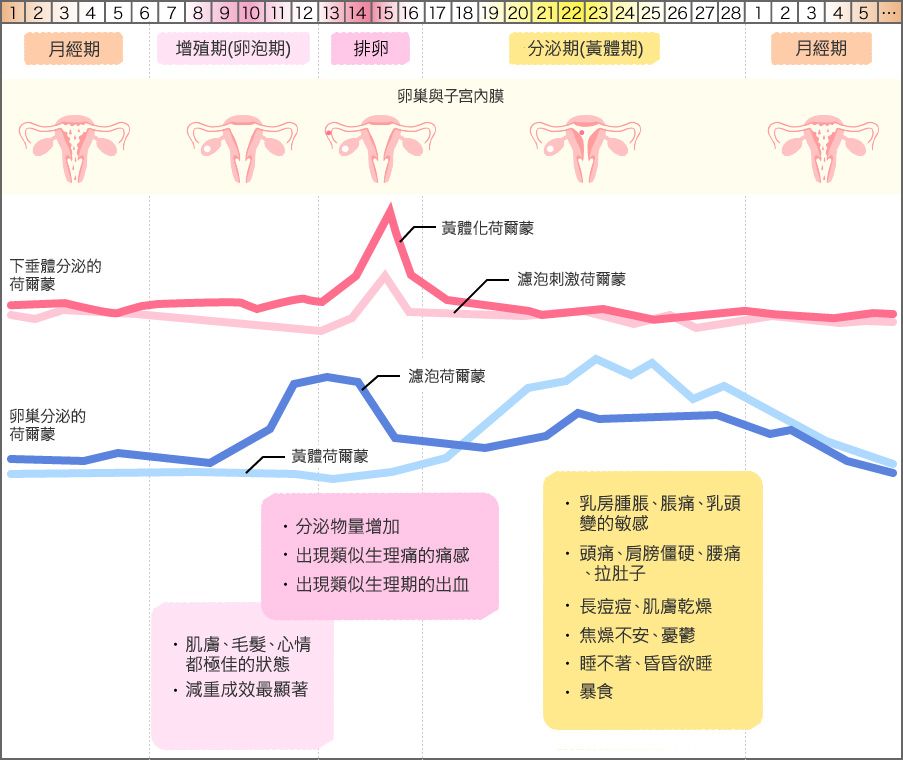Photo by Jonathan Borba on Unsplash
Menstrual Cycle
Relatively safe periods:
Before menstruation,During menstruation,After menstruationare relatively safer periods, avoiding the possible ovulation periodbetween menstrual cycles

Menstrual Flow → Safe Period
Menstrual cycle: Days 1-5
The first day of vaginal bleeding is the first day of the menstrual cycle. The corpus luteum degenerates, estrogen and progesterone levels decrease, and the uterine lining sheds, with bleeding lasting 3-5 days.
Follicular Phase → Safe Period
Menstrual cycle: Days 5-14
The next stage after the menstrual cycle is the follicular phase (proliferative phase). This is also a relatively appropriate “safe period” in the month. Ovarian follicles begin to develop under the influence of stimulating hormones. The uterine lining also gradually thickens to protect the follicle. Due to hormone secretion, mood relaxes, and skin and hair become more lustrous. This is the best time for a girl’s physical condition!
Ovulation Phase → Danger Period
Menstrual cycle: One of days 14, 15, or 16
After the safe period of the follicular phase, we enter the “ovulation period”. Unlike sperm, which exists in semen in billions, only “one egg” is formed and released from a woman’s ovary each month, making it quite rare and precious. For women trying to conceive, the ovulation day is very important because the egg only lives for 1-2 days after being released.
In contrast, sperm can live for up to 5 days, so the 4-5 days after ovulation will be a “danger period”.
Luteal Phase → Danger Period
Menstrual cycle: Days 15-29
After the egg is released, we enter the “luteal phase”. At this time, the secretion of progesterone helps stabilize the uterine lining, aiding in the implantation of a fertilized egg for conception. The duration of progesterone varies for each individual, averaging around 14 days.
From the above, considering the 7 days of the menstrual cycle, the estimated time before and after ovulation, and the 14 days of the luteal phase, the safe period is only about 7-10 days, accounting for about 1/3-1/4 of a month, and it’s only “relatively safe”.

Calculating Safe Periods
Menstrual Safe Period Calculation Method
There’s a possibility of failure, with a failure rate of about 25%. Both parties need to have very good self-control. Not recommended for women with irregular menstrual cycles.
Count from the first day of this menstrual period to the first day of next month’s period as one cycle, which is your menstrual cycle (in days). Ovulation usually occurs about 12-16 days before the next period, meaning you’ll enter the danger period 4-5 days after this period. If you avoid sex before and after ovulation, you can reduce the risk of pregnancy.
To use this method, your periods must be very regular, and you need at least 12 months (minimum 6 months) of menstrual cycle records to find the longest and shortest menstrual cycles.
- Shortest cycle - 18 = First day of the danger period.
- Longest cycle - 11 = Last day of the danger period.
To avoid pregnancy, you must abstain from sex during this danger period.
Basal Body Temperature Method for Safe Period
May lead to misjudgment due to physiological factors or cold
Women’s body temperature is lower before ovulation. After ovulation, the ovaries secrete progesterone, causing a slight rise in body temperature, which is used to calculate the “safe period”.
For measurement, a special basal body temperature thermometer is needed for accuracy. Measure twice a day, upon waking and before sleeping. Avoid talking or moving before measuring, and record the temperature on a basal body temperature chart after five minutes. Note that factors like colds or indigestion can affect body temperature and should be recorded on the chart for interpretation.
Contraceptive Methods
| Method | Advantages | Disadvantages | Explanation |
|---|---|---|---|
| Birth Control Pills | Low pregnancy rate of 0.3% | Need to take daily | Birth control pills are highly effective, with a pregnancy rate as low as 0.3%! Besides lowering pregnancy risk, they can regulate menstruation and hormones, effectively making periods regular. However, it’s still recommended to consult a doctor before taking birth control pills for menstrual regulation |
| Condoms | Easy to obtain, prevent STDs | Still a risk of pregnancy, reduced sensitivity | This is the most common and simple method, available 24 hours a day, and can effectively reduce the chance of STD infection, making it the best way to protect yourself! However, incorrect use of condoms can still lead to pregnancy. Remember to use them throughout, and be careful not to tear the condom with your nails when opening - small tears you can’t see can still lead to pregnancy! If you maintain the habit of using condoms even during safe periods, you can greatly reduce the chances of pregnancy! |
| Morning-After Pill | Best remedial method, must be taken within 72 hours after intercourse | Less effective with repeated use, prone to side effects | If you have unprotected sex without preparation, the morning-after pill is your best remedial method. Remember to take it within 72 hours after intercourse (regardless of whether it’s during a safe period or not), and the later you take it, the less effective it is! The morning-after pill has obvious and strong side effects. Most women who take it experience pain, nausea, fatigue, irregular periods, etc. This contraceptive method is very hard on the body! So try to avoid situations where you need to take the morning-after pill! |
